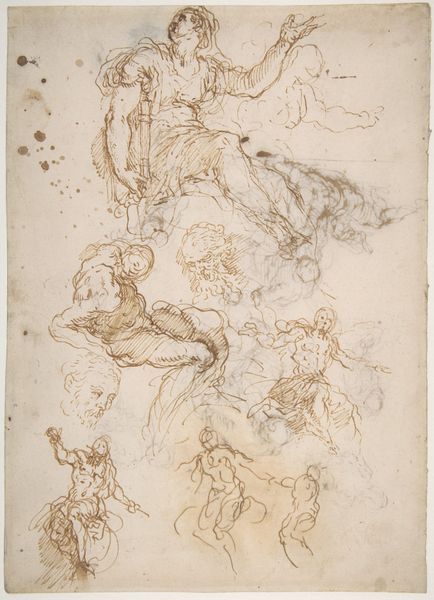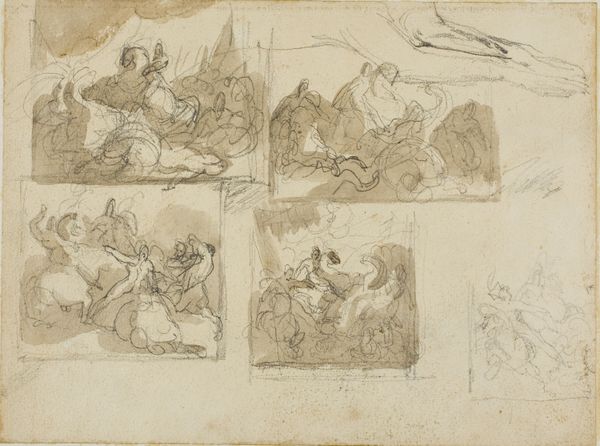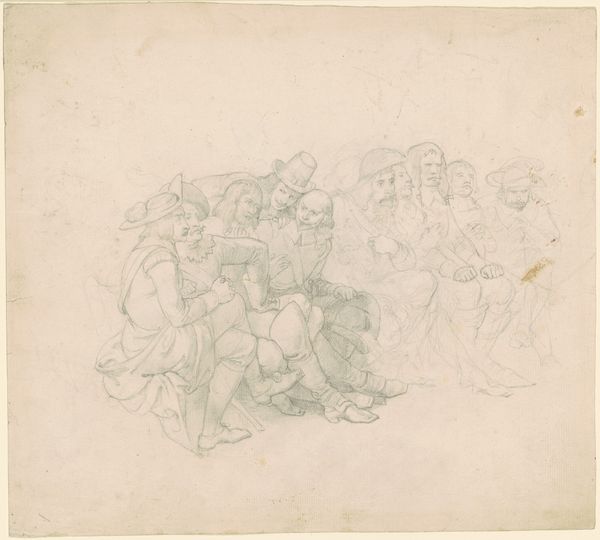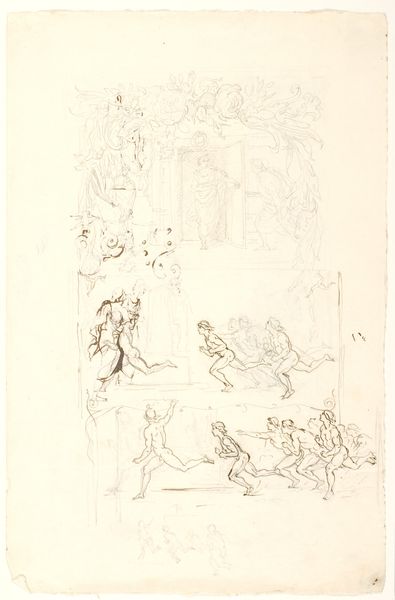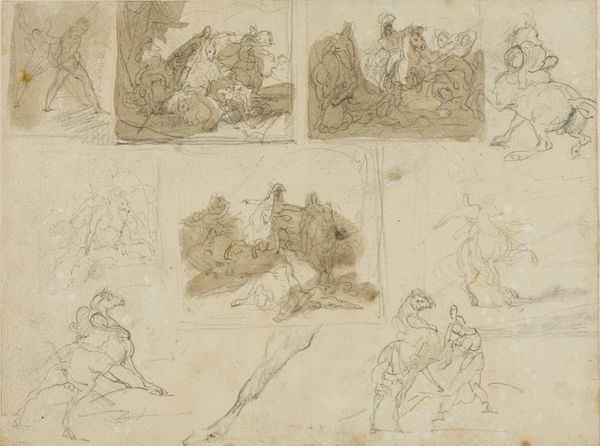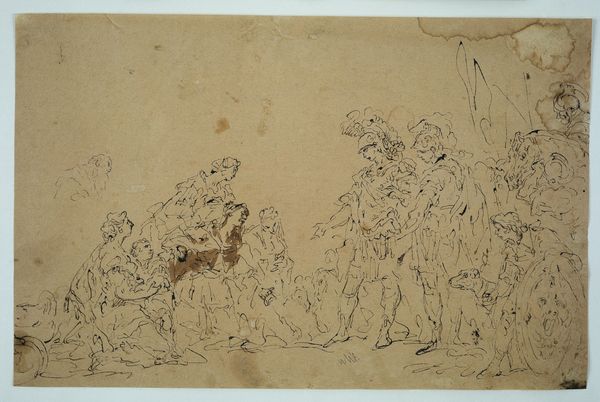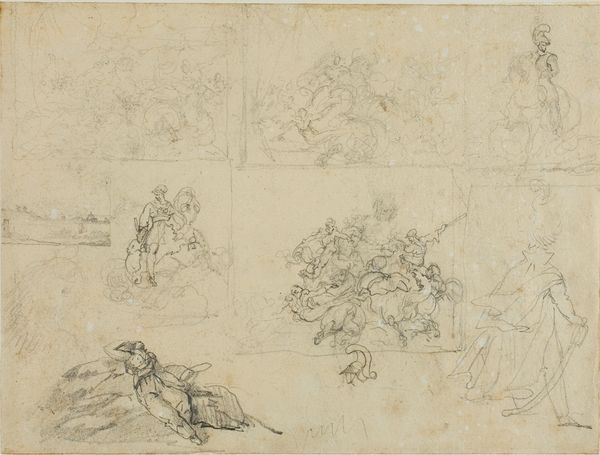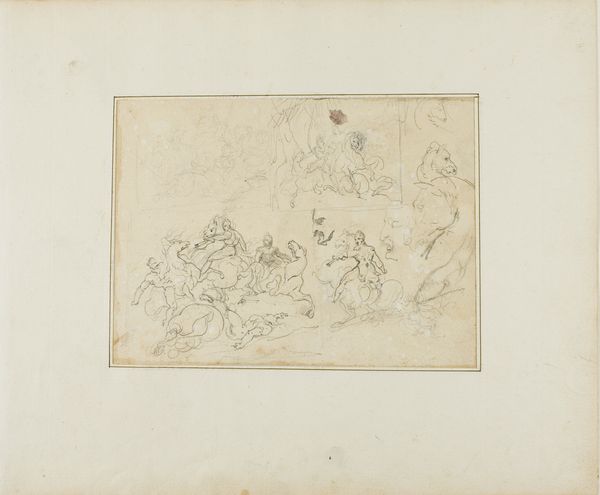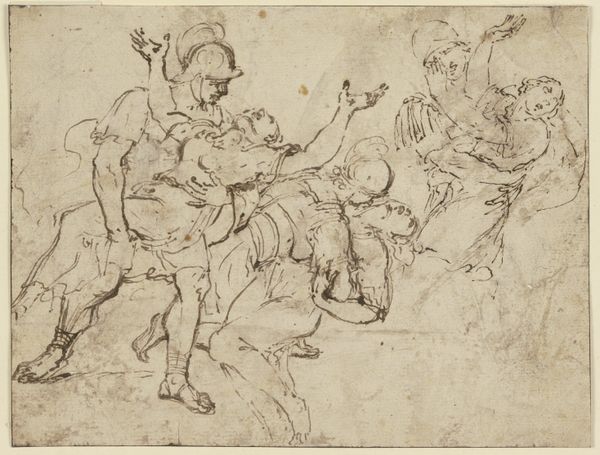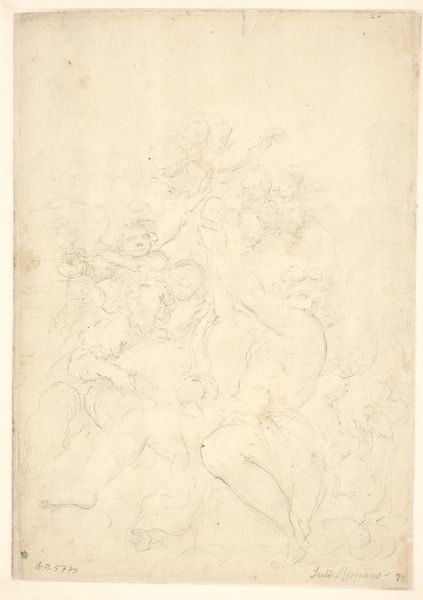
Study for a triton with two putti and another for Neptune with a putto 1570 - 1654
0:00
0:00
drawing, ink
#
drawing
#
allegory
#
ink painting
#
figuration
#
11_renaissance
#
ink
#
academic-art
#
italian-renaissance
#
watercolor
Dimensions: 184 mm (height) x 285 mm (width) (bladmaal)
Editor: Here we have Giuseppe Alabardi’s drawing, "Study for a triton with two putti and another for Neptune with a putto," created sometime between 1570 and 1654. The ink work gives the figures a fluid, almost ethereal quality, yet the composition feels dynamic, with all these figures in motion. What compositional elements stand out to you? Curator: Observe how Alabardi employs two distinct groupings on a single sheet. The tritons and Neptune are rendered with differing degrees of completion, creating a visual dialogue between the finished and the implied. Notice the strategic placement of the putti. How do they impact your perception of scale and depth? Editor: The putti do create a sense of scale; Neptune and the triton appear monumental in comparison. What's the significance of using primarily ink washes in terms of the figures' volume and contour? Curator: Precisely. Alabardi uses ink washes to modulate light and shadow, suggesting form without definitively outlining it. Note how the hatching technique differs between the two studies, indicating a potential exploration of varying stylistic approaches to representing the human figure. Does this variance affect your interpretation of the figures' vitality? Editor: It does; the hatching in the Triton study makes the figure appear more robust and forceful. How do you read the orientation of the figures? Curator: Consider their placement. Both Neptune and the triton are angled slightly inward, creating an implied narrative connection, almost as if they are engaged in a silent discourse. The spiraling arrangement of the figures also echoes Mannerist tendencies towards dynamic asymmetry and complex spatial arrangements. What's your final assessment? Editor: I see it now! I initially focused on the surface, but dissecting its structural elements unveils a conscious, intellectual approach. Thanks for illuminating Alabardi’s thoughtful orchestration of form and space. Curator: Indeed. It reveals how an artwork’s essence is in its construction and the artist's careful deployment of form.
Comments
No comments
Be the first to comment and join the conversation on the ultimate creative platform.
